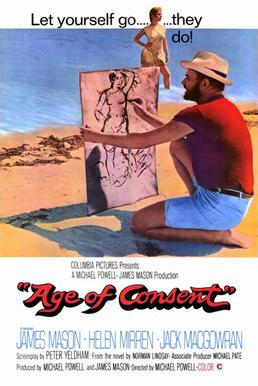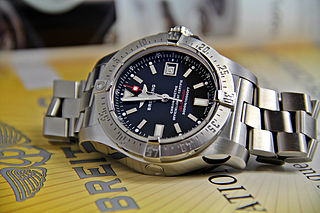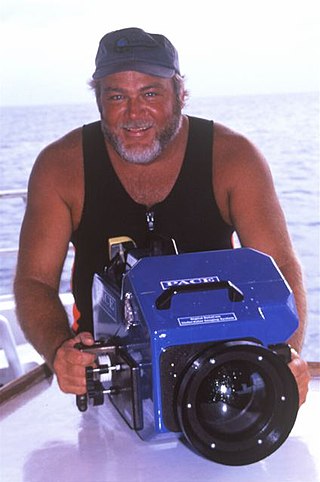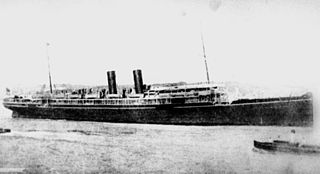Kathy Troutt | |
|---|---|
| Born | 14 September 1947 |
| Occupation | Actress |
Kathy Troutt (born 14 September 1947) is an English-born model, actress, deep sea diver[ clarification needed ] and dolphin trainer who moved to Australia in 1948.[ citation needed ]
Kathy Troutt | |
|---|---|
| Born | 14 September 1947 |
| Occupation | Actress |
Kathy Troutt (born 14 September 1947) is an English-born model, actress, deep sea diver[ clarification needed ] and dolphin trainer who moved to Australia in 1948.[ citation needed ]
At age 16 Kathy Troutt made the Guinness Book of Records for the deepest female deep sea scuba dive, breathing ordinary air to a depth of 320 feet (97.5 m)[ clarification needed ] off Sydney Harbour with former Royal Australian Navy diver, Wally Reynolds. [1] Kathy dived on Sydney Harbour shipwrecks in 1965. [2]
Sports clothes and glamour model throughout the 1960s, she appeared on Skippy the Bush Kangaroo (as herself) as a visiting marine biologist.[ clarification needed ] Troutt appeared in the documentary Mermaids in Paradise, released to television and cinemas in 1965 by Ben Cropp. [3]
She worked in pantomime London, England, where she trained dolphins for movies. She was spotted by a representative of director Mike Nichols, where she was to train a dolphin for the feature film The Day of the Dolphin .[ citation needed ]
Troutt was later hired for similar work for the feature film The Blue Lagoon , in which she also played the body double for Brooke Shields. [4]
This was followed by work as a crew member on Return to the Blue Lagoon and several other feature films later produced in Australia and Asia. [5]

Jacques Mayol was a French diver and the holder of many world records in free diving. The 1988 film The Big Blue, directed by Luc Besson, was inspired by his life story and that of his friend, Enzo Maiorca. Mayol was one of the screenwriters and authored the book Homo Delphinus: the Dolphin Within Man of his philosophy about the aquatic origins of humans.

Freediving, free-diving, free diving, breath-hold diving, or skin diving is a form of underwater diving that relies on breath-holding until resurfacing rather than the use of breathing apparatus such as scuba gear.

Deep diving is underwater diving to a depth beyond the norm accepted by the associated community. In some cases this is a prescribed limit established by an authority, while in others it is associated with a level of certification or training, and it may vary depending on whether the diving is recreational, technical or commercial. Nitrogen narcosis becomes a hazard below 30 metres (98 ft) and hypoxic breathing gas is required below 60 metres (200 ft) to lessen the risk of oxygen toxicity.

The Blue Hole is a diving location on the southeast Sinai, a few kilometres north of Dahab, Egypt on the coast of the Red Sea.

Age of Consent is a 1969 romantic comedy-drama film directed by Michael Powell. The film stars James Mason, Helen Mirren in her first major film role, and Jack MacGowran, and features actress Neva Carr Glyn. The screenplay by Peter Yeldham was adapted from the 1938 semi-autobiographical novel of the same name by Norman Lindsay, who died the year this film was released.

Byford Dolphin was a semi-submersible, column-stabilised drilling rig operated by Dolphin Drilling, a Fred Olsen Energy subsidiary. It drilled seasonally for various companies in the British, Danish, and Norwegian sectors of the North Sea. It was registered in Hamilton, Bermuda until scrapped in 2019.
Boesmansgat, also known in English as "Bushman's Hole", is a deep submerged freshwater cave in the Northern Cape province of South Africa, which has been dived to a depth of 282.6 metres (927 ft).

A clearance diver was originally a specialist naval diver who used explosives underwater to remove obstructions to make harbours and shipping channels safe to navigate, but the term "clearance diver" was later used to include other naval underwater work. Units of clearance divers were first formed during and after World War II to clear ports and harbours in the Mediterranean and Northern Europe of unexploded ordnance and shipwrecks and booby traps laid by the Germans.
Defenses against swimmer incursions are security methods developed to protect watercraft, ports and installations, and other sensitive resources in or near vulnerable waterways from potential threats or intrusions by swimmers or scuba divers.
Ron Josiah Taylor, AM was a prominent Australian shark expert, as is his widow, Valerie Taylor. They were credited with being pioneers in several areas, including being the first people to film great white sharks without the protection of a cage. Their expertise has been called upon for films such as Jaws, Orca and Sky Pirates.

A diving watch, also commonly referred to as a diver's or dive watch, is a watch designed for underwater diving that features, as a minimum, a water resistance greater than 1.1 MPa (11 atm), the equivalent of 100 m (330 ft). The typical diver's watch will have a water resistance of around 200 to 300 m, though modern technology allows the creation of diving watches that can go much deeper. A true contemporary diver's watch is in accordance with the ISO 6425 standard, which defines test standards and features for watches suitable for diving with underwater breathing apparatus in depths of 100 m (330 ft) or more. Watches conforming to ISO 6425 are marked with the word DIVER'S to distinguish ISO 6425 conformant diving watches from watches that might not be suitable for actual scuba diving.
Ratio decompression is a technique for calculating decompression schedules for scuba divers engaged in deep diving without using dive tables, decompression software or a dive computer. It is generally taught as part of the "DIR" philosophy of diving promoted by organisations such Global Underwater Explorers (GUE) Innerspace Explorers (ISE) and Unified Team Diving (UTD) at the advanced technical diving level. It is designed for decompression diving executed deeper than standard recreational diving depth limits using trimix as a "bottom mix" breathing gas.

Bret Clifton Gilliam is a pioneering technical diver. He is most famous as co-founder of the certification agency Technical Diving International along with Mitch Skaggs, and as the one time holder of the world record for deep diving on air. He is also one of diving's most popular writers. Gilliam is the author or coauthor of 72 books, over 1500 feature magazine articles, and over 100 magazine cover photos. In his diving career he has logged over 19,000 dives since 1959.
Leigh Bishop is an explorer and deep sea diver known for his deep shipwreck exploration and still underwater photography.

Agnes Milowka was an Australian technical diver, underwater photographer, author, maritime archaeologist and cave explorer. She gained international recognition for penetrating deeper than previous explorers into cave systems across Australia and Florida, and as a public speaker and author on the subjects of diving and maritime archaeology. She died aged 29 while diving in a confined space.

Favre-Leuba is a Swiss manufacturer of luxury wristwatches headquartered in Zug, Switzerland, and formerly a pioneer in watch design, manufacturing and distribution. The foundation of the brand was laid in 1737 when Abraham Favre was registered as a watchmaker, so it has been reported as the second-oldest watch brand in Switzerland, after Blancpain (1735).

SS Egypt was a P&O ocean liner. She sank after a collision with Seine on 20 May 1922 in the Celtic Sea. 252 people were rescued from the 338 passengers and crew aboard at the time. A subsequent salvage operation recovered most of the cargo of gold and silver.

Hannah Fraser, known professionally as Hannah Mermaid, is a professional model, actress, dancer, and performer who specialises in underwater and ocean-oriented freediving performances, often in mermaid costume. She is a central figure in modern mermaiding and is an ocean ecology activist.

Valerie May Taylor AM is a conservationist, photographer and filmmaker, and an inaugural member of the diving hall-of-fame. With her husband Ron Taylor, she made documentaries about sharks, and filmed sequences for films including Jaws (1975).

Cave diving is underwater diving in water-filled caves. The equipment used varies depending on the circumstances, and ranges from breath hold to surface supplied, but almost all cave diving is done using scuba equipment, often in specialised configurations with redundancies such as sidemount or backmounted twinset. Recreational cave diving is generally considered to be a type of technical diving due to the lack of a free surface during large parts of the dive, and often involves planned decompression stops. A distinction is made by recreational diver training agencies between cave diving and cavern diving, where cavern diving is deemed to be diving in those parts of a cave where the exit to open water can be seen by natural light. An arbitrary distance limit to the open water surface may also be specified. Despite the risks, water-filled caves attract scuba divers, cavers, and speleologists due to their often unexplored nature, and present divers with a technical diving challenge.